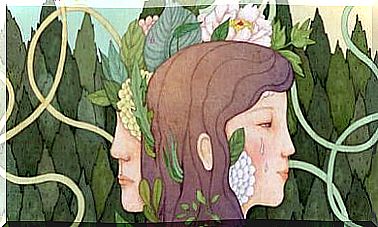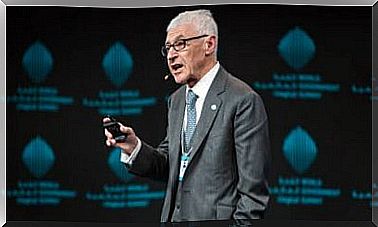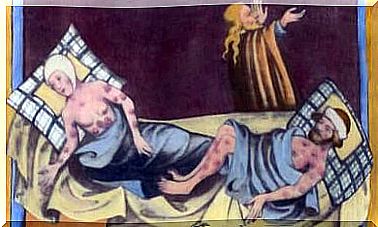Soren Kierkegaard: Biography Of The Father Of Existentialism
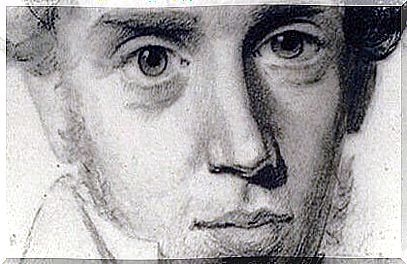
It is said that Soren Kierkegaard loved Regina Olsen until the last day of her life. However, his goal was to devote himself body and soul to the study of Christian philosophy and faith. This Danish theologian and philosopher has always had to deal with the weight of this anguish, the suffering of not being able to free himself from his affections. However, thanks to this, he was able to shape his theoretical legacy.
Kierkegaard’s work is based on the sense of faith. Only this dimension enabled him to achieve salvation and balance in times of despair. This perspective was a reaction to Hegel’s idealism . More importantly, one aspect that defined the famous Danish philosopher was his critical voice in front of those religious institutions which he said acted hypocritically.
In his books Fear and Trembling , Les crumbs philosophiques or Le Journal du seducteur , we understand the dualism that governed his entire life. Love, suffering and the impossible passion in the face of the need to devote oneself to theology have marked the tumultuous daily life of one of the most relevant and interesting figures in philosophy.
So while the Danish church proposed a rational God who rewarded good works, the God of Kierkegaard did not understand devotions, he reacted only to fear. His philosophy laid the foundation for 20th century existentialism. Indeed, he defines human subjectivity and the individual as null in order to differentiate him from the masses, and he has also inspired thinkers such as Jean-Paul Sartre, Friedrich Nietzsche and Albert Camus.
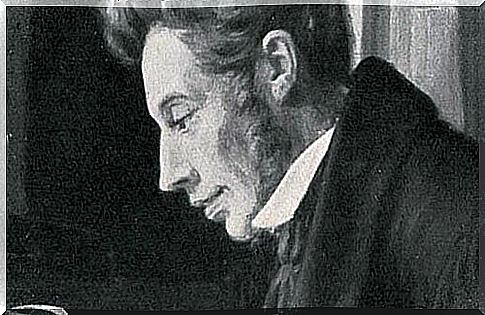
Biography of Soren Kierkegaard
Soren Kierkegaard was born in Copenhagen in 1813 into a well-to-do family. He was the son of Michael Pedersen Kierkegaard, a religious pastor from Jutland with a very Puritan sense of existence. His mother was Anne Sorensdatter Lund Kierkegaard, a young servant whom his father had made pregnant and over whom he still felt the weight of sin.
Young Soren went to the school of civic virtue and later pursued his fatherly purposes: to study theology at the University of Copenhagen. It should be noted, however, that he was always more interested in philosophy and literature. Likewise, a remarkable fact of his early youth was meeting Regina Olsen at age 15, to whom he became engaged after graduation.
His father died in 1838, but not before Soren promised him something very concrete: to become a pastor, dedicate his life to God, and study. The weight of this promise then became this anchor which irretrievably restricted his emotional life. He called off his engagement to Regina and then moved to Berlin.
The next 10 years will be the most productive in the life of this young theologian. The creation of this period is undoubtedly one of the most remarkable in the history of literature.
Love, guilt and suffering
In 1943, he published 6 books. One of them, and not the least, is Fear and Tremor , where he tackles a recurring theme in most of his works: his love for Regina. He navigates in guilt, pain and a devoted sense of obedience to his religion. The same year, he discovers on his return to Copenhagen that the young woman has just married Fritz Schegel. For him, therefore, this fact completely wiped out any second chance.
The months that followed were also very fruitful, both literally and philosophically.

We highlight, for example, his work centered on the critique of the theories of Georg Wilhelm Friedrich Hegel. Books like Philosophical Crumbs, The Concept of Anguish and Stages on the Path of Life tell us about these thoughts and emotional realities experienced by the person facing adversity. A field in which he was a specialist.
Soren Kierkegaard and his brother Peter gradually became the only survivors of their family. Their father always reminded them that they were cursed, that the shadow of sin hung over them and that, therefore, everyone would die young. Ironically, this “prophecy” has been fulfilled. Moreover, he himself died at only 42 years old.
The causes of his death have never been very clear. We know that he had a disability, that his health had never been good. However, this did not prevent him from leaving an important and exceptional literary and philosophical legacy.
Soren Kierkegaard’s legacy
William James liked to quote very often one of Soren Kierkegaard’s best known phrases “we live ahead, but we understand behind”. He was the Danish philosopher and the theologian of subjectivity. So, and although at first it seems like everything he left us was steeped in some negativity and hopelessness, it can be said that it was not.
He taught us that to live is to know how to choose. Kierkegaard made us see that with each choice our existence is shaped to define who we are and what we leave behind. He also wanted to make an effort for people to understand the meaning of anguish and suffering. It’s all a part of life and the only way to relieve pain is, according to Kierkegaard, through faith.
The author of pseudonyms and existentialism
Soren Kierkegaard carried out much of his work under various pseudonyms such as Victor Eremita, Johannes de Silentio, Anti-Climacus, Hilarante Bookbinder or Vigilius Haufniensis. It actually served a very specific purpose: to represent different ways of thinking.
This strategy defines what he calls “indirect communication”. In this way, he could explore points of view different from his own and thus reach the reader in a richer and deeper way. One of Kierkegaard’s goals was also to teach a person how to lead his life, thus establishing 3 types of existence, 3 types of spheres, which are:
- Aesthetics: this sphere defined a mode of existence centered on pleasure, hedonism or nihilism
- Ethics: it has given shape to an existence where the individual is able to take charge of himself. Here, we can distinguish “good from evil” and be consistent with these principles
- Religious: it was the most important for Kierkegaard. Here, the human being establishes a personal relationship with God, from which to achieve more noble goals
The philosopher of anguish, the philosopher of self-irony
Characters such as Albert Camus did not hesitate to speak of Soren Kierkegaard as the philosopher of self-irony. This theologian defended the faith above all, but never missed an opportunity to attack the Danish church. He rejected the love of his life, but never stopped loving the girl who was an absolute muse in many of his works …
Thus, he has always exalted the need to cultivate a religious spirit, while having himself lived immersed in an aesthetic and ethical sphere.
Another aspect that defined him was this concept marking the work of great writers such as Kafka, Unamuno or the philosopher Ludwig Wittgenstein, namely angst. This feeling which, according to Fernando Savater, will never go out of fashion. Because this state (Danish: begrebet angest) also defines an experience where, all of a sudden, we realize that there are more options. That we are free to jump into the void or take a step back and look for other ways.
There are always alternatives to suffering, but suffering itself also helps us to grow. The teachings of Soren Kierkegaard, as we see, will always be present.



